Once a year, the city of Luxor, Egypt throws a 3-day party celebrating the moulid (birth date) of the 13th century Sufi leader Sheikh Yusuf al-Haggag, who was also known as “Abu al-Haggag”, “father of the pilgrims”. Tourists from other parts of Egypt often come to Luxor to join the party. I’ve been to the moulid twice: once in 2018, and again in 2019.
Over the course of the event, people celebrate with tahtib (martial art) competitions for the men, carnival rides for the children, pilgrimages to the Abu al-Haggag Mosque, Sufi zikrs (rituals), horse racing, and more. The moulid’s final day culminates with the Dora, a parade. For purposes of this blog post, I’ll focus on the Dora. Perhaps in the future I’ll show some of the other facets of the festival.
The festival occurs in the middle of the Islamic month of Sha’aban, which is the month that immediately precedes Ramadan. The Islamic calendar is lunar, so every year it shifts about 2 weeks compared to the 365-day solar calendar. In 2019 when I was there, the moulid’s Layla Kebira (big night) was on April 19, the night of the full moon. (In 2018, it was April 29.)
The day after the Abu Haggag’s moulid holds its Layla Kebira, the people of Luxor close the festival with the Dora. Although moulid celebrations occur throughout Egypt honoring various different saints, the only one to feature a Dora is Luxor’s Abu Haggag.
The Dora’s Origin
Historians believe the roots of the Dora lie in the Opet festival of ancient Egypt, which many archaeologists believe began during the reign of Hatshepsut 3,000 years ago. This event, known as the Beautiful Feast, was celebrated at the time of the Nile’s annual inundation, and it was Luxor’s most important holiday. Egyptians would transport a statue of the god Amun-Ra in a boat traveling from the Karnak Temple to the Luxor Temple, where statues of his consort Mut and his son Khons awaited him. In later years, after the canal silted up, the boats were carried along the route. The statues would remain at the Luxor Temple for the 24 days of celebration, then return by boat to Karnak at the end.
The path of this procession was marked by the Avenue of the Sphinxes shown below, which still remains in Luxor today. Interestingly, at the Luxor end of the Avenue (shown in this photo), the sphinxes feature human heads. At the opposite end, at the Karnak temple, the sphinxes feature rams’ heads. The sculptures gradually change from human heads to rams’ heads along the route from the Luxor Temple to Karnak Temple.
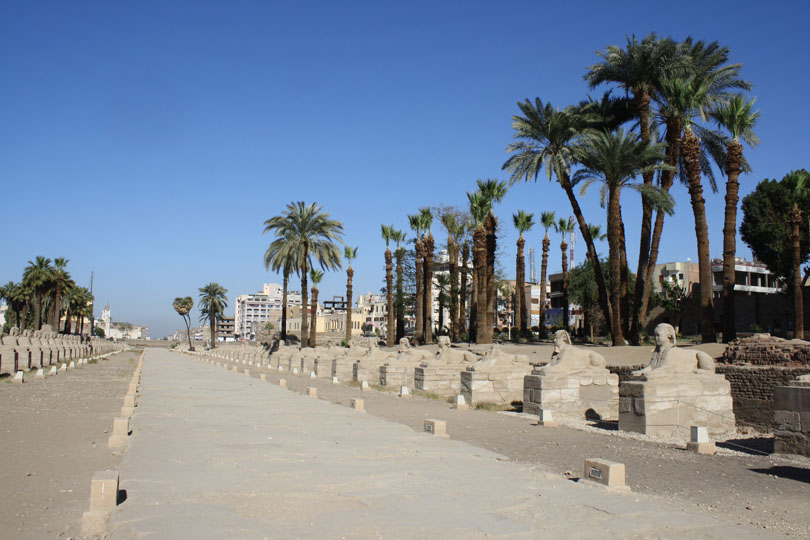
The modern-day Dora at the end of the Abu al-Haggag moulid is believed to be directly descended from this procession of ancient times. Just as the ancients conducted their procession with boats while the Nile River was in its annual flood stage, the modern-day Egyptians still refer to the vehicles in the Dora as “boats” and some are constructed to indeed look like boats.
However, today they move through the streets on wheels. Some look like actual boats mounted on carts just for the day. (It makes me wonder whether the “floats” we refer to in modern-day parades in North America are a holdover from this ancient tradition. Why do we call them “floats”?)
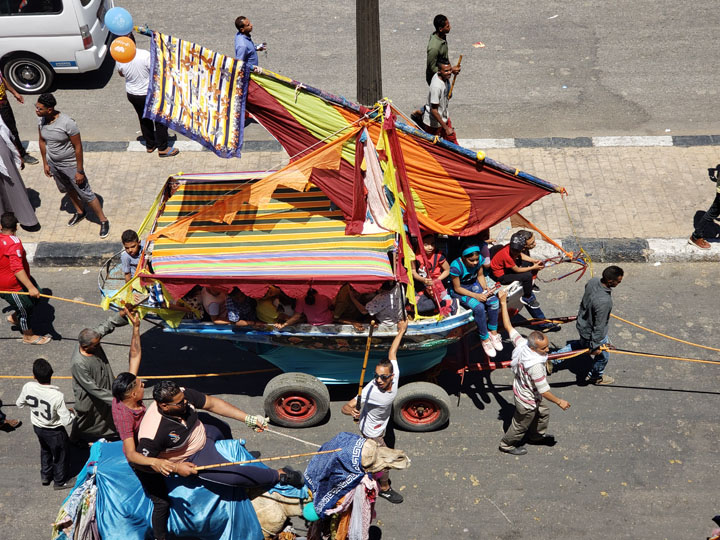
The Morning of the Dora
The Dora itself does not begin until mid-day. However, it is entertaining to head for downtown Luxor early in the morning to grab a window seat at an upstairs coffee shop where you can drink coffee, eat ice cream, and watch the preparations. It’s good to pick a place with a view of the Abu Haggag Mosque and Luxor Temple, because a large amount of moulid action takes place in front of them.
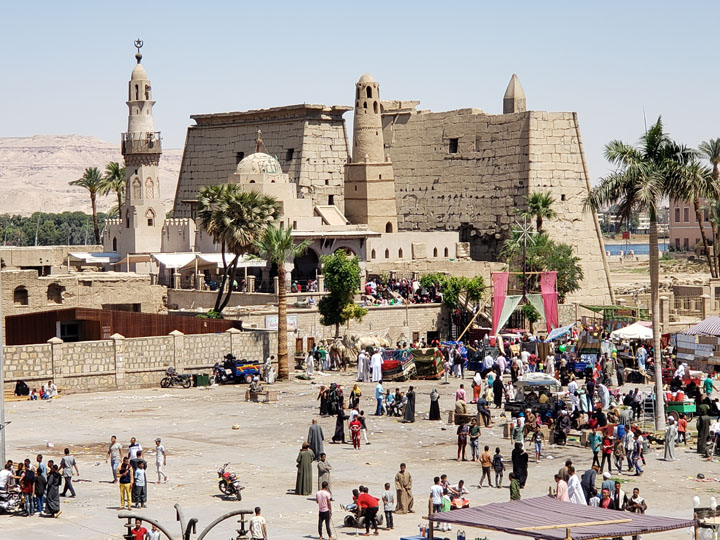
We could see a large amount of activity in the street below our coffee shop, such as donkey carts, camels dressed up for the parade, horse-drawn carriages, various automobiles going about their business, and more.
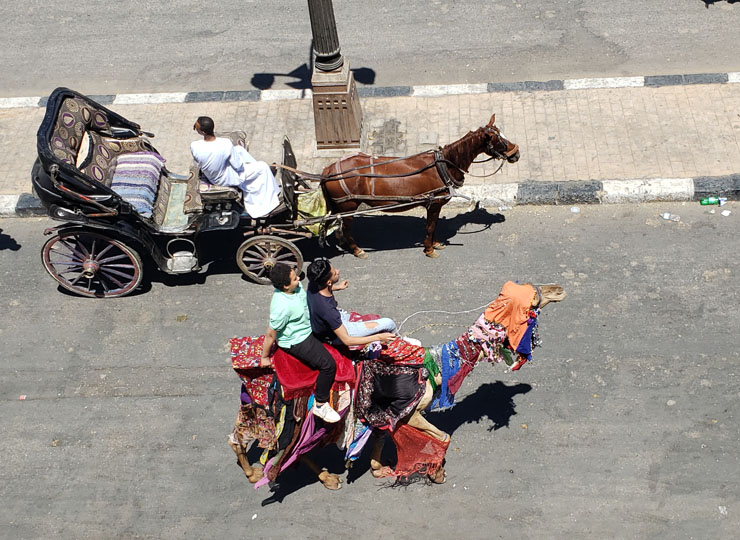
It’s great fun to see the many costume items people use to dress up their camels. People drape them in colorful scarves, and sometimes even include some belly dance hip scarves jingling with coins. I laughed when I saw one with a British flag draped over his butt. We saw one camel wearing a Bob Marley hat!
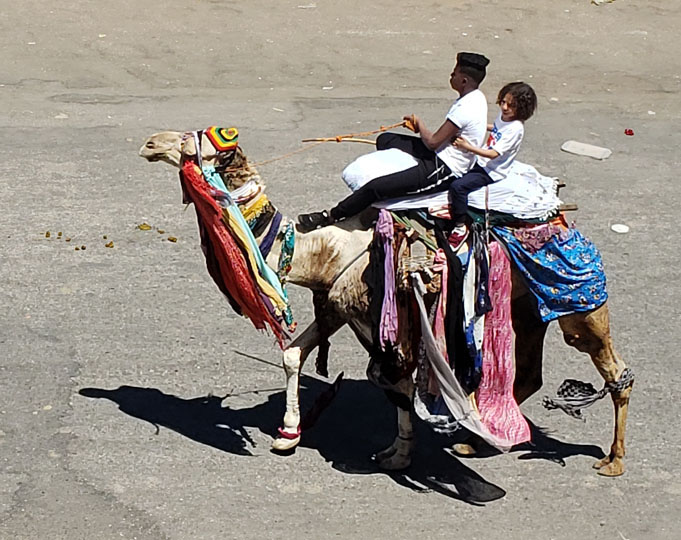
Parade Time!
Watching the Dora in Luxor can be a bit of a challenge. One issue is that it’s not easy for a foreigner to determine in advance which streets to go to for watching. City officials don’t publicize the parade route in advance, for security reasons. Another issue, which is true of almost any parade anywhere in the world, is that it can be difficult to work your way through the crowd to a spot where you can see. I forgot to wear sunscreen, which left my face looking a bit pink after four hours in the sun!
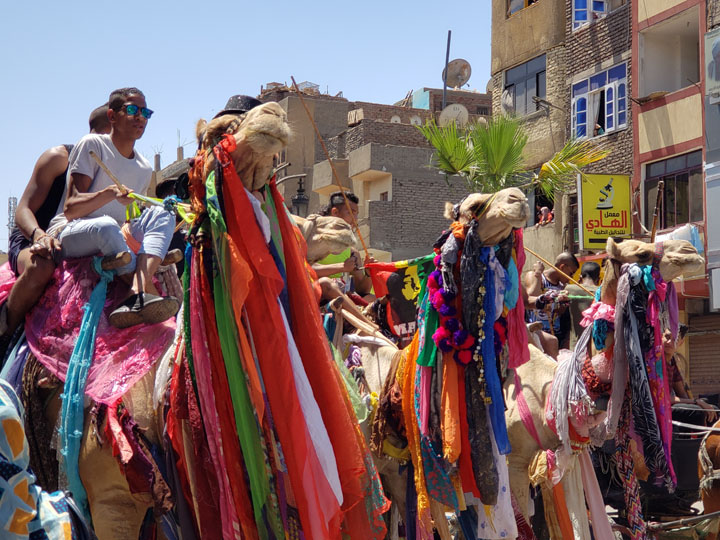
The Dora isn’t nearly as structured as the parades I’m accustomed to in the United States, and that’s one of the things I like very much about it! I could be wrong about this, but I don’t think the participants necessarily adhere to a specific parade route and a specific lineup. I got the impression that some of the participants joined in wherever they felt like it, and also turned off of the main parade route when they wanted to, particularly the costumed camels.
The Dora very much feels like a mobile party, much more entertaining than my local college’s Homecoming parade. There are no marching bands in the Dora, but there’s plenty of music in the form of large speakers booming out pre-recorded pop music.
In many cases, a large group of young men holding assayas (the sticks used for the ancient Egyptian martial art of tahtib) walks together in front of a boat, waving their sticks in time to the music coming from the speakers. I feel so much joy and pride coming from them as they pass by, and I think they’re my favorite part of the experience of watching the Dora. Even after they have passed by, I still find myself smiling. I took several photos of them, but found that I just couldn’t capture the energy and excitement.
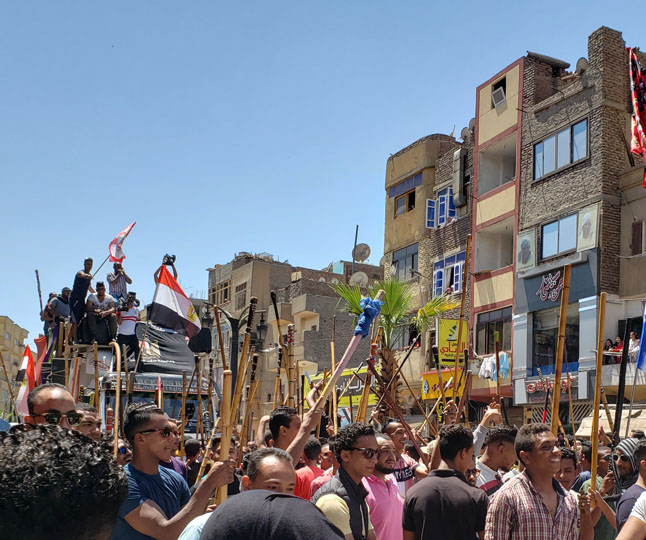
Generally speaking, each of the boats represents a business, and features decorations that match with the type of work the business does. Several boats represent grocers, each with a beautiful display of fruit. As these boats progress along the Dora route, the people on them pitch apples, oranges, mangoes, and other fruit out to the people watching. People happily catch them and wave back to the people on the boat.
I saw one guy toss an orange up to a group of people watching from a balcony above him, but his aim was bad, and the fruit crashed through a nearby window! Oops! To my surprise, nobody acted angry or upset about it. Someone emerged from behind the broken window, smiling and waving. Of course, things can get quite entertaining if the boat passing by contains watermelons and its occupants decide to throw a few of those to the crowd….
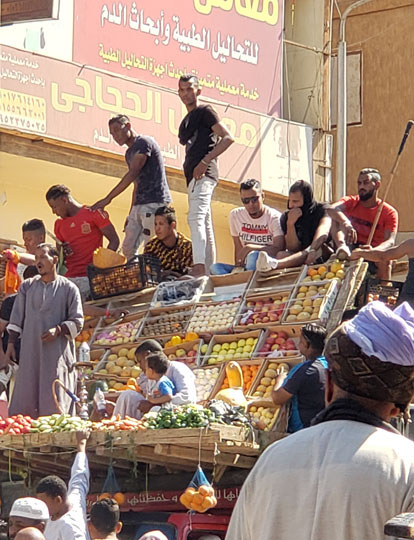
Sometimes things can go wrong. One boat was a garbage truck. As it approached where I was watching, it spouted several puffs of colored particles. They were fun to see, but made it hard for me to watch due to some of the dust getting under my contact lenses.
As I was blinking and rubbing my eyes, someone inside the truck’s cab must have accidentally bumped the control that operates the dump function. The back of the truck started to raise, and several moments of confusion arose as the men on top of it either tried to jump down into the surrounding crowd or clung to it trying to hang on. For a few minutes, the parade halted as the people involved with the truck tried to work out what to do next. Eventually, they figured out what to do and the truck started to move again.
The finale of the parade consists of camels carrying shrines on their backs. Each shrine looks like a small house made of fabric. Seated inside each shrine is a child holding it steadily in position on the camel’s back. People along the parade route look to the shrines for blessings as they pass by. When I saw the Dora in 2018, there were about five shrines, but in 2019 I counted eleven of them!
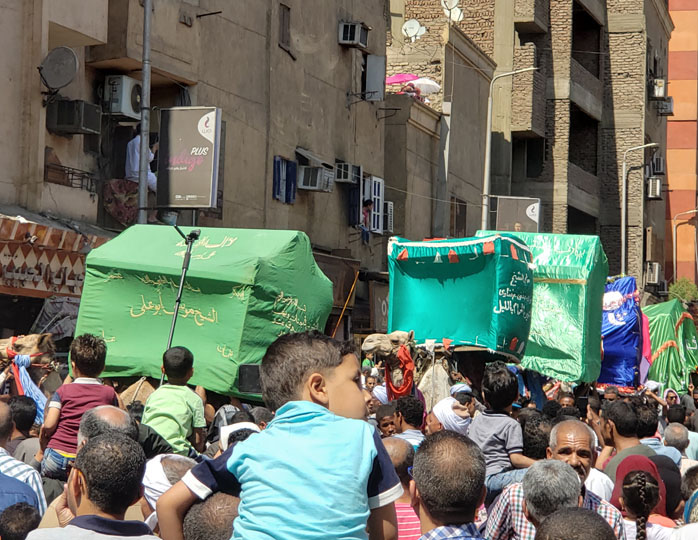
After the shrines have passed, there can be a few more boats, camels, and other parade participants following behind, but at this point the crowd starts to dissipate. I was definitely ready to head back to the Nile to catch the ferry to my hotel, because I had been standing on my feet for about 4 hours at that point. Although my back and feet were sore and my face pink from sunburn, I felt it was worth every minute I spent enjoying this unique Luxor experience! The Abu el-Haggag moulid is a living example of why Luxor’s modern-day culture is every bit as fascinating as its archaeology.
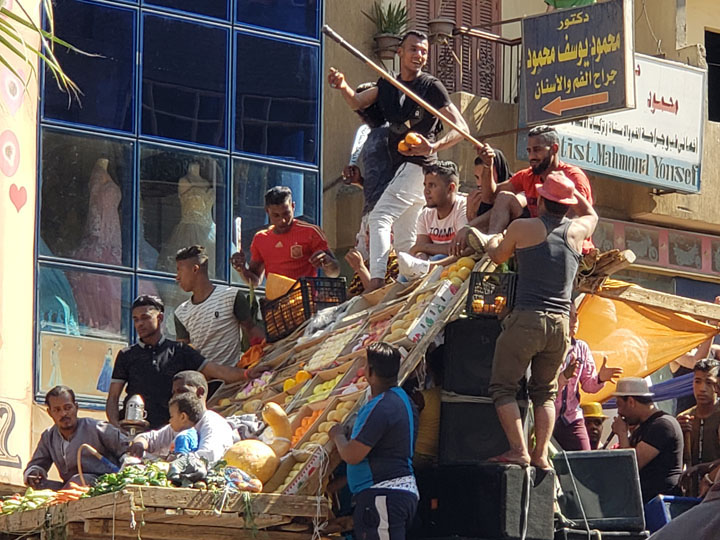
One thought on “Luxor, Egypt: A Parade with Its Roots in Antiquity”
Comments are closed.